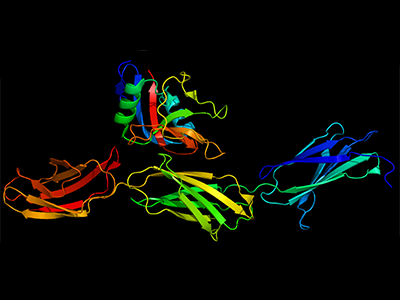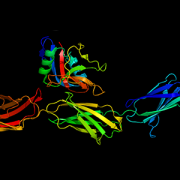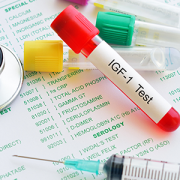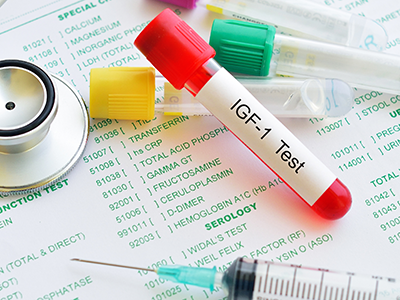Two new papers advance aggrecan deficiency research

Aggrecan (ACAN) is a large protein found in joint cartilage and growth plates.
Andrew Dauber, M.D., M.M.Sc., division chief of Endocrinology at Children’s National Hospital, and colleagues recently published two papers that describe the phenotypic spectrum of aggrecan deficiency and look at treating the condition with human growth hormone.
Aggrecan (ACAN) is a large protein found in joint cartilage and growth plates. It allows joints to move smoothly and without pain. Aggrecan deficiency — due to heterozygous mutations in the ACAN gene — causes dominantly inherited short stature and, in many patients, early-onset osteoarthritis and degenerative disc disease.
Clinical phenotype of patients with aggrecan deficiency
In 2017, Dr. Dauber led an international consortium of researchers that published a manuscript describing the phenotypic spectrum of 103 individuals – 70 adults and 33 children, including 57 females and 46 males – from 20 families with ACAN mutations. In the study, Dr. Dauber and his colleagues established that short stature and accelerated bone age is common among people with ACAN mutations.
In a new study published in the American Journal of Medical Genetics Part A, Dr. Dauber and colleagues further characterize the phenotypic spectrum of aggrecan deficiency, with an emphasis on musculoskeletal health.
Twenty-two individuals from nine families were enrolled in the study. Recorded histories and examinations focused on joint health, gait analysis, joint specific patient reported outcomes and imaging.
“We performed a detailed analysis of the musculoskeletal manifestations in patients with mutations in the aggrecan gene,” says Dr. Dauber. “We found that patients with mutations in this gene had significant short stature which worsened with age. There was a high prevalence of joint complaints and arthritis in adults, and we were able to detect pre-symptomatic joint damage in children using knee MRIs.”
Treating short stature in aggrecan-deficient patients with human growth hormone
Until now, it was unknown how to treat children with aggrecan deficiency. “Providing growth hormone therapy to children with ACAN gene mutations is relatively new in the field of pediatric endocrinology,” explains Dr. Dauber. “Previously, the assumption was that this was just short stature.”
In a new study, published in The Journal of Clinical Endocrinology and Metabolism, Dr. Dauber and colleagues reported the results of a trial that evaluated the efficacy and safety of recombinant human growth hormone (rhGH) therapy on linear growth in children with ACAN deficiency.
“This is the first prospective trial of growth hormone therapy in patients with mutations in the aggrecan gene,” says Dr. Dauber. “Mutations in the gene are the cause for short stature in approximately 2% of individuals with idiopathic short stature.”
The open-label, single-arm, prospective study enrolled ten treatment-naïve patients with a confirmed heterozygous mutation in ACAN. Participants were treated with rhGH (50 µg/kg/day) over 1 year. Main outcomes measured were height velocity and change in height standard deviation score.
The authors found that growth hormone led to short term improvements in growth rate over the course of the year. The treated patients had their growth rate increase from 5.2 centimeters per year to 8.3 centimeters per year while on therapy.
In 2019, the researchers received the 2019 Human Growth Award at the Pediatric Endocrine Society’s Annual Meeting for an abstract related to this work, entitled “Clinical Characterization and Trial of Growth Hormone in Patients with Aggrecan Deficiency: 6 Month Data.”





